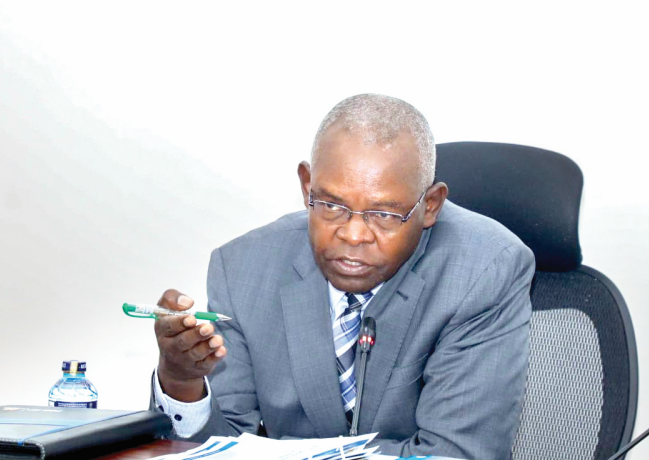MPs query why CBK is dominated by two tribes

Half of Central Bank of Kenya’s (CBK) employees are from two communities.
Senate National Cohesion, Equal opportunity and Regional Integration committee, chaired by Marsabit’s Mohammed Chute, took CBK Governor Kamau Thugge to task by demanding to know why Kikuyu and Kalenjin communities dominate the institution.
Chute wondered why CBK had failed to address ethnic composition in jobs, adding that even internships are still being given to the Kalenjin community only.
“From your presentation, the Kikuyu and the Kalenjin take up almost 50 per cent of jobs in CBK. You have also given internship positions to the Kalenjin community leaving the rest of Kenyans. This is unacceptable,” said Chute.
Chute wants CBK to replace those who are soon retiring with people from communities that are under represented.
In his response, Thugge said that out of the 1,311 employees, some 455 are between the 51 and 60.
CBK has 325 employees from the Kikuyu community followed by Kalenjin (258), Luo (139), Kamba (123), Luhya (113), Kisii (90), Meru (66), Maasai (31), Taita (30), Mijikenda (25), Embu (17), Kenyan Somali (13) and Borana (7) respectively.
Kuria, Mbeere and Turkana have five employees each, while Ilchamus, Kenya Arabs, Pokomo, Swahili, Taveta, Teso and Tharaka each have four employees each.
Thugge while acknowledging that two communities have taken more than half of the positions, said that they will ensure that the 455 who are aged between 51 and 60 will be replaced by people from other communities.
“I acknowledge that the positions have been skewed in favour of only two dominant communities at the exclusion of other communities. We will address the employment of other communities in subsequent recruitment processes,” said Thugge.
Completing tasks
Thugge added that in line with Article 232 of the Constitution and the bank’s diversity and inclusiveness core value, they have employed staff from 31 ethnic backgrounds ,which comprises 67 per cent of the 46 ethnic communities in Kenya.
Some 26.4 per cent of the workforce fall between 41 and 50 years, indicating an experienced workforce, important for knowledge transfer and business continuity purposes.
According to Thugge, to address the issue of an aging workforce the bank has put in place a succession process given that 34.7 per cent of the workforce is between 51 and 60 years.
“The bank intends to roll out a mentorship programme as it continues to employ a younger workforce,” said Thugge.
Senators Okiya Omtatah (Busia) and Dan Maanzo (Makueni) questioned the ethnic composition of the heads of the seven CBK branches in Kisumu, Kisii, Mombasa, Nyeri, Eldoret and Nakuru.
Promotion criteria
The two also sought to know those who have been promoted outside the advertised slots and criteria to promote some internally and others externally.
“We would like to know the spread of the heads of CBK branches and their ethnic composition. How is the recruitment done in CBK?” posed Omtatah.
Thugge told the committee that CBK will provide a list of the heads of the seven branches and the list of promotions in the last 16 months.
He further stated that CBK will engage with local authorities and the National Council for People Living with Disabilities (NCPWD).
Thugge explained that the recruitment process is robust and that there are six panelists including external Human Resource personnel who interviews the shortlisted candidates for various positions within the Bank.









